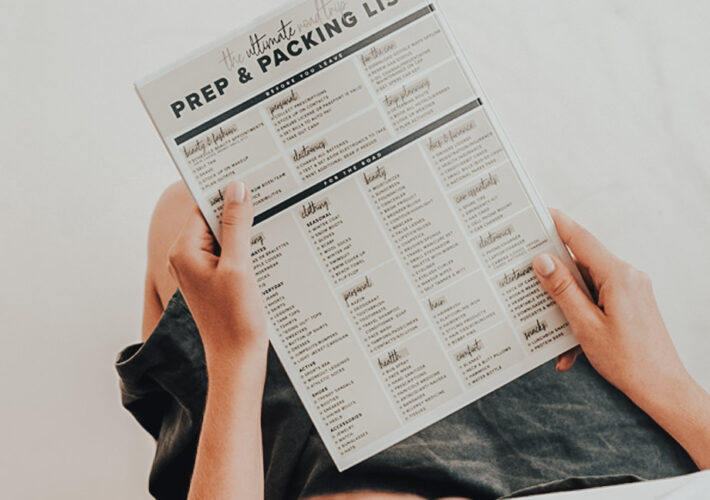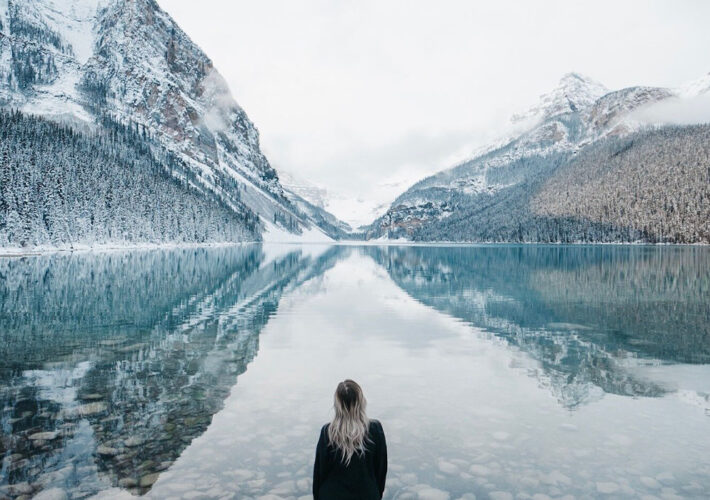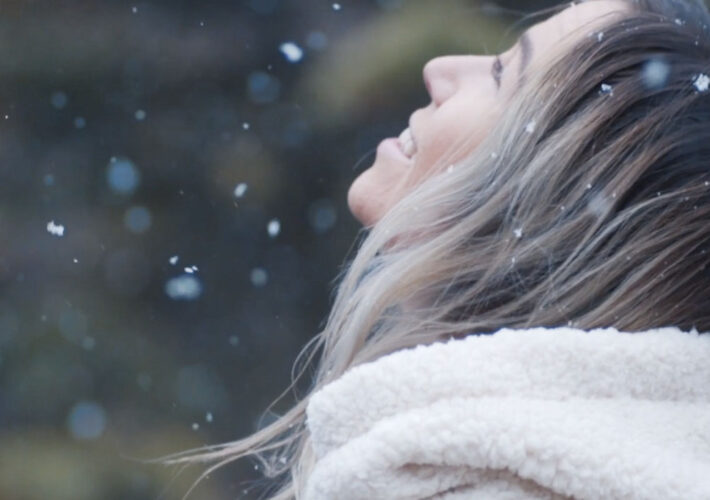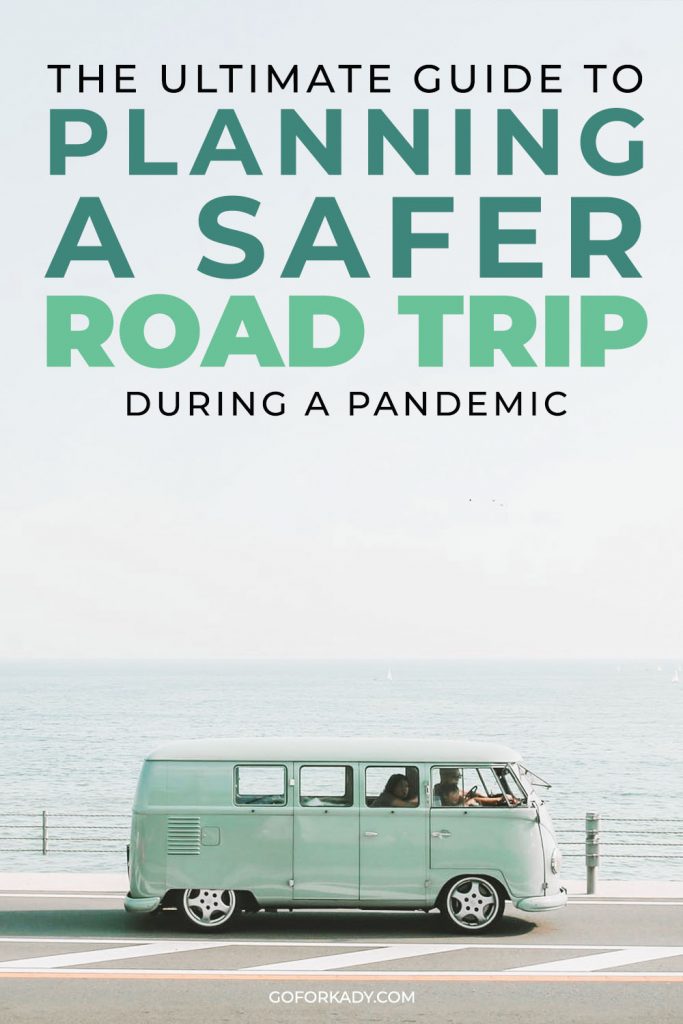
In these crazy times we’re living in, I’m sure so many of us are getting restless. Staying at home, staying indoors, and limiting contact with our friends and loved ones can be so trying. Especially during summer, when everyone is used to vacationing and exploring new places, it can be particularly difficult to accept that planning a big vacation during the coronavirus pandemic isn’t worth the risk. However, if you’re still craving a change of scenery, a road trip might be a safer option.
I’m going to begin this post by emphasizing that I am not a doctor, just an immunocompromised girl who’s been getting cabin fever after four months locked in her apartment. Above all, my recommendation is do not travel during the coronavirus pandemic. There’s a reason Americans aren’t allowed in any other country — we have more cases than anyone and it’s very clear we have been unable to control the spread. If you absolutely must plan some kind of covid road trip getaway though, here are my pieces of advice to make sure everyone stays as safe as possible during (and after) a road trip during covid.
How to Plan a Safer Road Trip During the Coronavirus Pandemic
This post may contain affiliate links, meaning I may receive a small commission if you shop through these links at no extra cost to you. Thank you for supporting me through these links! For more information, check out the disclaimer here.
Know the state’s regulations before you go
Since Coronavirus mandates have largely been left up to states, each state varies greatly on how they are regulating their citizens during the pandemic. Some states, particularly in the south, don’t require masks, have opened restaurants, and are basically free-for-alls. Other states, like in New England, have strict regulations to ensure the safety of their residents and to control and quell any potential spread of the virus.
It’s extremely important to know the specific regulations of each state you want to visit before you go. Some states require a mandatory 14 day quarantine upon arrival, and some aren’t even accepting visitors at all.
Here is a list of every state’s travel restrictions during coronavirus
This list is up to date as of July 31, 2020 and is meant to be a brief guide. Click on the state’s name for the most complete and up-to-date information.
| Alabama | No statewide restrictions |
| Alaska | Entry declaration form AND proof of negative Covid test OR self-quarantine until return of negative test required |
| Arizona | No statewide restrictions |
| Arkansas | No statewide restrictions |
| California | No statewide restrictions |
| Colorado | No statewide restrictions |
| Connecticut | Visitors from listed high-risk states must complete a form if staying in CT longer than 24 hours. Visitors entering from a state with a 10% or higher positivity rate over a 7-day rolling average must quarantine for 14 days. Click here for more detailed information on restrictions to CT. |
| Delaware | No statewide restrictions |
| District of Columbia | 14 day self quarantine required for visitors from listed high-risk states |
| Florida | Visitors from NY tri-state area must self-quarantine for 14 days |
| Georgia | No statewide restrictions |
| Hawaii | All travelers must self-quarantine for 14 days upon arrival, or the duration of their trip, whichever is shorter. Quarantining includes not going to the beach. Also required to complete a form acknowledging their requirement to isolate. |
| Idaho | 14 day self-quarantine required if entering Ada county (Boise and surrounding cities) from areas with community spread higher than Idaho’s |
| Illinois | 14 day self-quarantine required if traveling to Chicago from listed high-risk states |
| Indiana | No statewide restrictions |
| Iowa | No statewide restrictions |
| Kansas | 14 day self-quarantine required for travelers who had been in Florida or Arizona on certain dates |
| Kentucky | 14 day self-quarantine required for travelers from states with an infection rate of 15% or higher |
| Louisiana | No statewide restrictions |
| Maine | Recent negative covid test OR 14 day self-quarantine required; exemptions for certain states |
| Maryland | No statewide restrictions |
| Massachusetts | Recent negative covid test OR 14 day self-quarantine required; exemptions for certain states |
| Michigan | No statewide restrictions |
| Minnesota | No statewide restrictions |
| Mississippi | No statewide restrictions |
| Missouri | No statewide restrictions |
| Montana | No statewide restrictions |
| Nebraska | No statewide restrictions |
| Nevada | No statewide restrictions |
| New Hampshire | 14 day self-quarantine required for travelers coming from non-New England states |
| New Jersey | 14 day self-quarantine required for travelers from listed high-risk states if they plan to be in NJ for more than 24 hours |
| New Mexico | All travelers must self-quarantine for 14 days upon arrival, or the duration of their trip, whichever is shorter |
| New York | 14 day self-quarantine required for travelers from listed high-risk states. Travelers arriving must also fill out a form in person or online, depending on how you’re traveling |
| North Carolina | No statewide restrictions |
| North Dakota | No statewide restrictions |
| Ohio | 14 day self-quarantine required for travelers from listed high-risk states |
| Oklahoma | No statewide restrictions |
| Oregon | No statewide restrictions |
| Pennsylvania | 14 day self-quarantine required for travelers from listed high-risk states |
| Rhode Island | 14 day self-quarantine required if traveling from a state with greater than 5% positivity rate OR negative Covid test in the last 72 hours |
| South Carolina | Recommended 14 day self-quarantine if traveling from a state with high community spread |
| South Dakota | No statewide restrictions |
| Tennessee | No statewide restrictions |
| Texas | No statewide restrictions |
| Utah | No statewide restrictions |
| Vermont | No quarantine required if traveling in a private vehicle from listed counties in northeastern states. Other travelers must self-quarantine in state for 14 days, or out of state prior to arrival for 7 days if they have a negative Covid test. This one is a little complicated, so check their site for more detailed information. |
| Virginia | No statewide restrictions |
| Washington | No statewide restrictions |
| West Virginia | No statewide restrictions |
| Wisconsin | No statewide restrictions, but quarantining as much as possible for 14 days after returning from out of state is recommended |
| Wyoming | No statewide restrictions |
What does self quarantine mean?
Self quarantine means isolating yourself from public spaces, human interaction outside of those you live with, or other social situations. Do not meet up with friends or family, even if you are distanced. Do not go grocery shopping, to hair appointments, or other non-essential spaces. Do not visit outdoor spaces, like parks or beaches. Stay home the entire time, or as much of the entire time as humanly possible. It’s not fun, but it saves lives, and it’s necessary to prevent the spread of coronavirus.
Each state can have somewhat differing requirements on quarantining, so check with your state to ensure you’re following all regulations.

Maintain distance and isolation
During your covid road trip, it’s important to still stay as distanced from others as possible. Despite the pandemic, summer crowds are still in full effect in many locations. Avoid traveling to crowded areas, eating indoors (or outdoors) at restaurants, and going shopping. Use this time to reconnect with nature and unplug!
While stopped at gas stations or rest stops, remember to keep your time inside as short as possible and maintain six feet of distance from others as best you can. Keep your rest stops to a minimum in general by packing snacks and drinks with you before you leave!
Sanitize early and often
Before leaving, make sure your car is stocked with plenty of sanitation supplies. Here are a few supplies you can still pick up that I wouldn’t leave for a road trip without:
× Hand sanitizer — Purell is available from Amazon and Target, and the classics from Bath and Body Works are also affordable and available!
× Disinfecting wipes — Both Target and Walmart have some available in store and online, and Target has travel wipes available for delivery as well
× Disinfecting spray — Both Target and Walmart have some available in store and online
× Hand soap — Antibacterial hand soap is available from Amazon
× Disposable gloves — Regular disposable gloves, like these from Amazon, are perfectly fine, especially for things like pumping gas. Just throw them out before touching your face, phone, or anything else you may take with you.
Don’t travel too far
In a world where the aim is to reduce the amount of travel by as much as possible, contribute to the cause by staying closer to home. As tempting as it may seem, now is not the time to do your ultimate 50 states road trip! Keep in mind that every time you cross state lines, you bring germs from the previous state with you. The closer to home you stay, the safer it is for yourself and for the people in each state you visit.
Wherever you do stay, be sure to pick lodging that you can trust. I personally always go with an Airbnb when I can, because there’s less risk of running into others and sharing spaces like hallways and elevators. You can sign up through my link here and actually get an Airbnb coupon code for up to $65 off your first booking on Airbnb as well! (If you already have an account — first of all, I won’t tell if you just use a different email to get the code, and second of all, you can also search through my associate link instead, meaning I’ll receive a small commission on any trip you book at no additional cost to you.)
Many people prefer to trust a larger hotel chain instead, which totally makes sense! You can use the search bar below (it’s powered by booking.com, so don’t worry!) to find hotels available for your trip and see how they’re rated on metrics like cleanliness. Lots of hotels have altered and enhanced their cleaning procedures in the wake of the pandemic as well. You can cross-reference with Tripadvisor to see hotels that have taken enhanced measures.
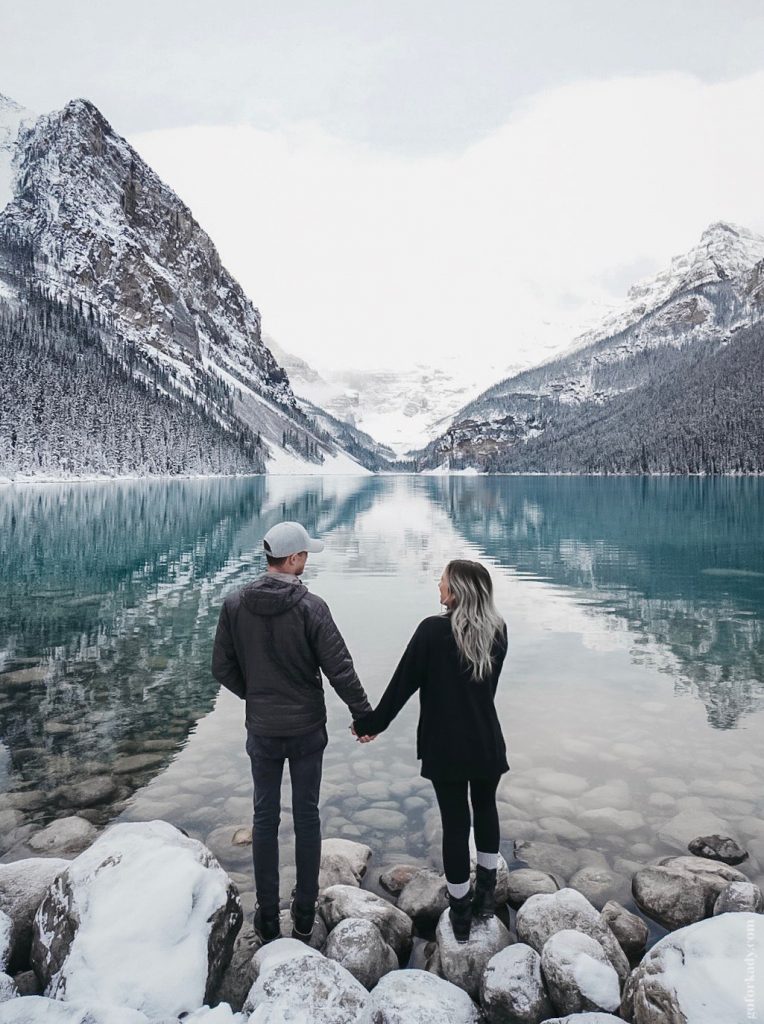
Choose your travel partners wisely
When you’re traveling with someone, maintain the same rules as you would if you were staying in the same place. Don’t travel with anyone you haven’t already been living with, or anyone who is at high risk or lives with someone who is high risk. Also, travel with as few people as possible. Now is not the time to get a large group of friends together that you haven’t seen in a while — save that for a socially distance park hangout at home. This is a great opportunity for a couples or siblings road trip (as long as you have been together and isolated for the last 14 days)!
Keep aware of local case counts
Keep in mind that even if you don’t have coronavirus now, you can get it at any point on your trip. Worse, if you contract it on your trip, you could continue to spread it to other locations even if you don’t have symptoms.
Use a website like Covid Exit Strategy or the New York Times Coronavirus Hub to keep track of places where cases and community spread is spiking. If you’re planning on going to a location with a recent spike in cases, you should reconsider.
Follow safety protocol despite each state’s local laws
States and counties have varying regulations as far as wearing masks, eating at restaurants, and other public activities. Regardless of what each state mandates, continue to wear a mask in public (here are some cute masks!), limit your exposure to others, and practice good hand washing hygiene. Just because a state allows you to go without a mask inside a crowded bar doesn’t mean it’s safe to do so. Play it safe with the risks you take in public, especially if you are far from home.
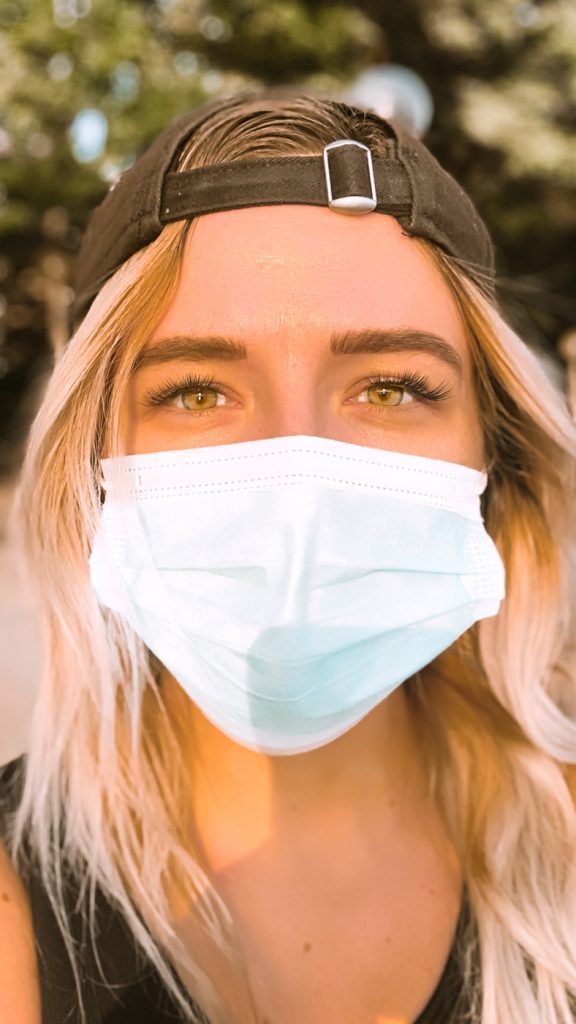
Isolate and get tested before you leave and when you return
Preventing the spread of Covid is largely about mitigating risk. One of the best ways to mitigate that risk is to get tested prior to leaving to make sure you don’t have it. Monitor your own symptoms for 14 days prior to leaving. If you feel unwell (or even if you don’t), it’s a good idea to get tested to know for sure. Many states now have widespread walk up testing. Use this directory of local health departments to find out how to get tested in your area.
When you return, especially if your state requires it as mentioned above, self-quarantine for 14 days, or until you can get tested again and receive a negative result. The last thing you want to do is make it through a whole road trip and wind up jump starting new community spread in your home area.
Do not travel if you’re not feeling well
There are no exceptions to this rule. If you do not feel well, or if at any point during your trip you begin to feel unwell, return home as fast as possible, while coming into contact with as few people as possible. It is everyone’s responsibility to control the spread of coronavirus, and traveling while you may have it is incredibly dangerous. Remember, it only took one person to bring coronavirus to the United States!
Remember there are no guarantees
At the end of the day, the safest way to prevent getting and spreading coronavirus is to stay home and not travel at all. By leaving the safety of your own home and home community, you are taking a conscious risk that you could get infected or infect your loved ones. It’s extremely important to think critically about whether travel is necessary and whether you’re ok with the potential consequences of getting sick or getting someone else sick while traveling. We all want the pandemic to be controlled as soon as possible, so do your part to make that happen!
If you do ultimately decide you can road trip safely, definitely don’t let the fear of covid consume you. As long as you do everything in your power to stay safe, let yourself enjoy the trip!
Planning on taking a road trip?
Check out the 8 Must Have Road Trip Essentials you can get from Amazon — don’t leave without them! If this is your first road trip, be sure not to make these 6 Road Trip Mistakes!


